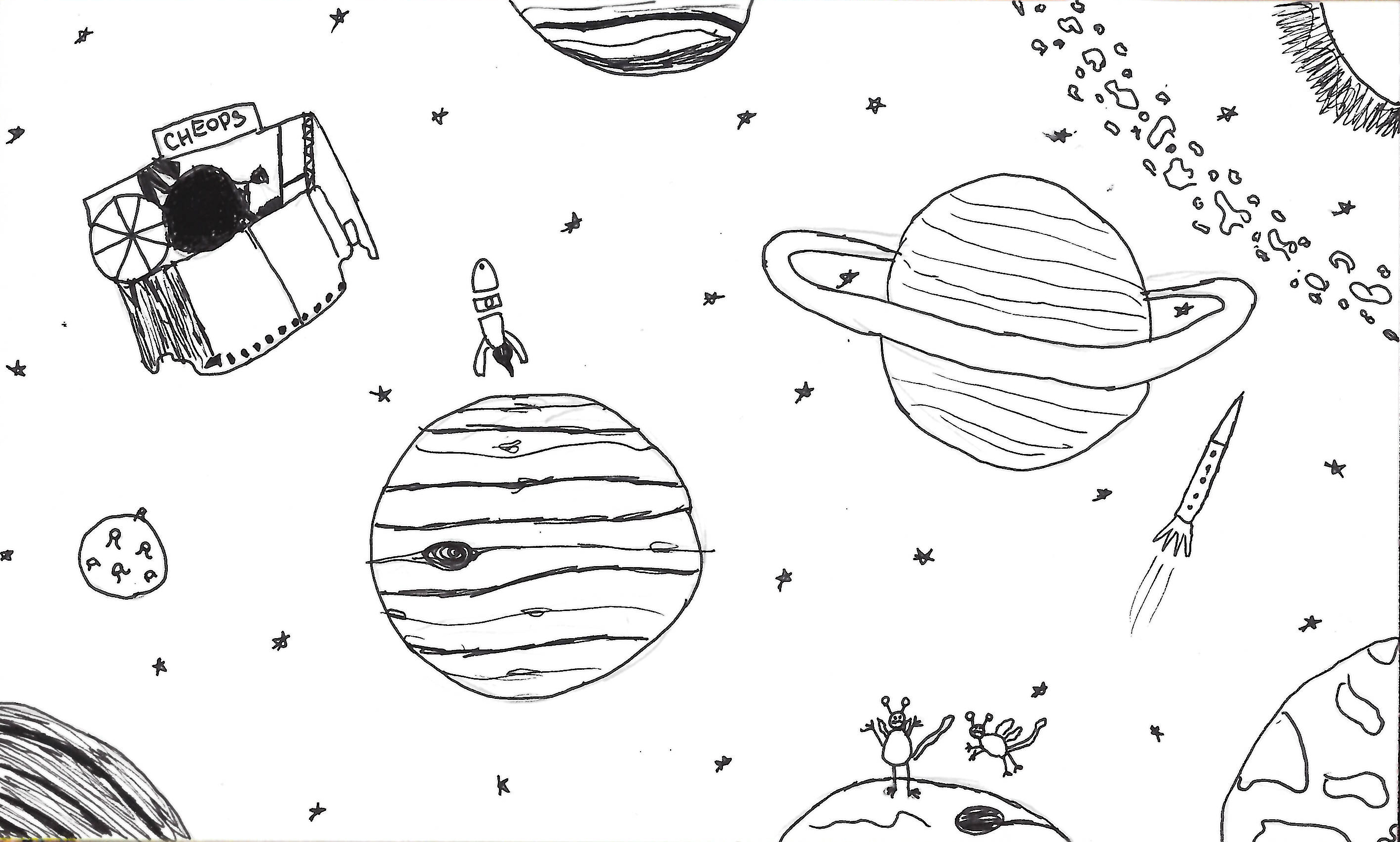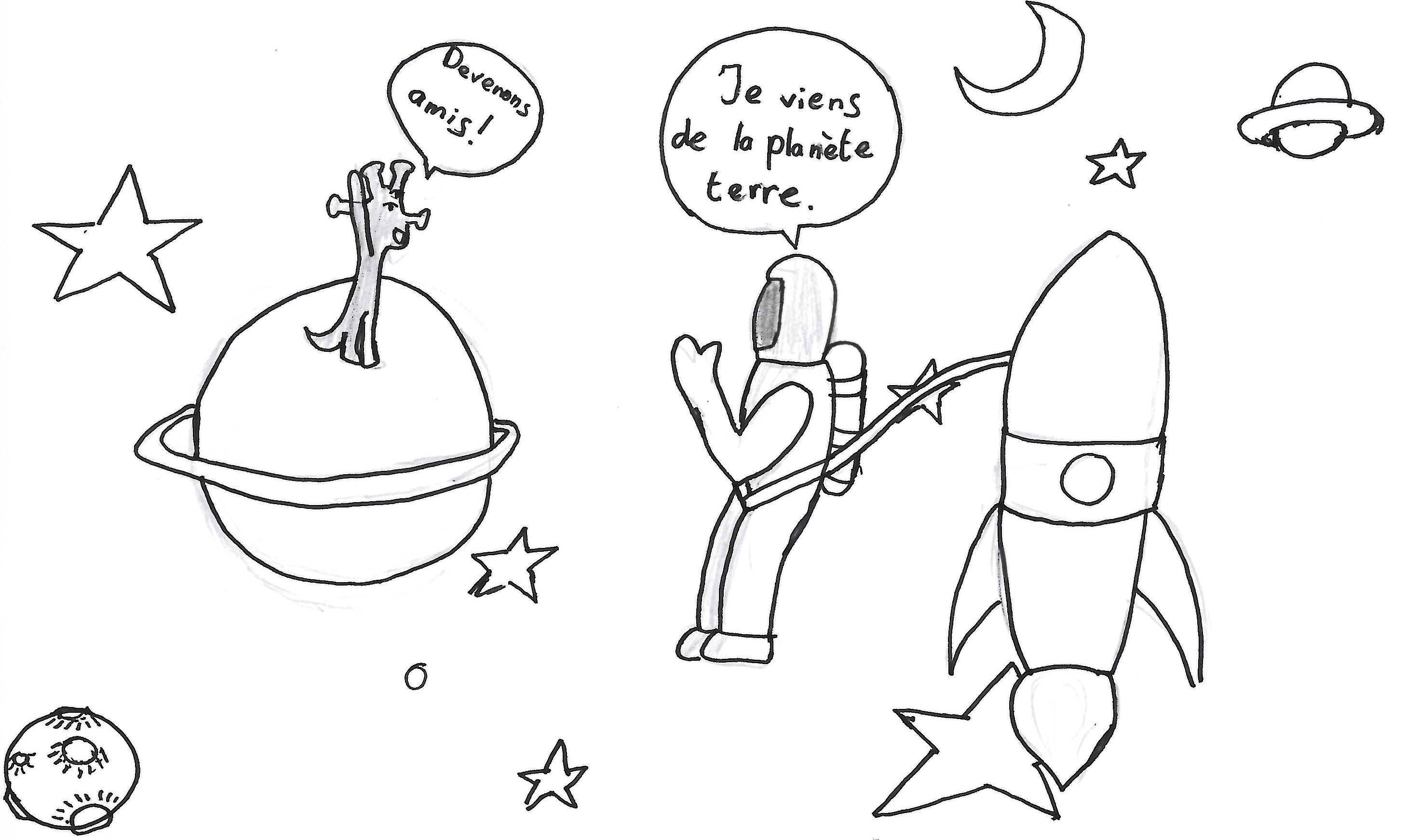3000 drawings for CHEOPS space mission on the Web
Children in Switzerland and all over Europe made thousands of imaginative drawings of stars, planets, rockets, satellites, and aliens. 3000 entries to the drawing campaign organised by the University of Bern will fly into space with CHEOPS, a space telescope being built in collaboration between the European Space Agency (ESA) and Switzerland. You can now have a look at the drawings on an interactive map of Europe on the Web.
The circle with its wide ring clearly represents a planet like Saturn, distant stars are in the background, and the rocket in front has just lit the engines to leave Earth, which is well characterized by its continents: The girl from Geneva and the boy from Zurich, both nine years old, drew creative but also accurate pictures of space, as well as the twelve year old girl from Bern and the thirteen year old boy from Basel/Reinach, who also prominently featured the CHEOPS (Characterising ExOPlanets Satellite ) satellite in their landscapes of celestial bodies – four of 888 Swiss drawings that are now on display on the CHEOPS homepage together with more than 2000 contributions from other European countries.
In the next six months, the department of applied Informatics and Technics of the Bern University of Applied Sciences in Burgdorf will miniaturise and engrave the drawings on two metal plaques that will fly into space. For this, the plaques will be attached to the CHEOPS satellite by a prominent representative of the confederation a few months before launch. On the drawings, the satellite often looks like a square case labelled CHEOPS which is actually not so far from reality. The 300 kg satellite is in fact a hexagon carrying a telescope that will observe nearby stars known to host planets.
On the path to search for life
CHEOPS will determine the diameter of the observed exoplanets. Knowing also the mass of the object the scientists can find out whether it is a gas giant like Jupiter and Saturn, or a rocky world not unlike Earth. This is an important step on the way to find potentially habitable planets where signs of life could be detected in the future. «We wanted the children to share the excitement about living at a special moment in time, when technology and science come together to allow discovering new worlds and possibly life beyond our Earth», says Willy Benz, professor for astrophysics at the University of Bern and leader of the CHEOPS mission for Switzerland: «What could be better than a drawing to unleash their imagination?»
In fact, the participants of the drawing competition who are 8 to 14 years old seem to have no doubt that there really exists life beyond Earth. But their representation of eventual life forms differs considerably from the one of scientists. While the latter puzzle about the chance that humans one day may discover simplest forms of life, like living cells, somewhere on a distant celestial body, children see life forms with multiple arms or legs and exotic features on their heads, some even riding on the CHEOPS satellite. Although the young artists are aware of the probable communication problem, one of the strange creatures tells a human astronaut: «Let’s be friends!»
First ESA mission led by Switzerland
The space telescope is designed, integrated and tested at the Center for Space and Habitability (CSH) at the University of Bern. For the first time Switzerland, together with ESA, is not only responsible for an instrument or part of it, but for an entire mission including the ground segment. «CHEOPS is a rewarding continuation of the 50 years success story of Swiss researchers and industry at the cutting edge of space research», says Benz. After a successful test campaign of the structural and thermal model, the real flight telescope is now being built. It will have to pass another battery of tests before it will be launch ready at the end of 2017.
Drawings from all over Europe
The Swiss drawings were collected at several events, starting in March 2015 during the partial solar eclipse and closing at the end of October 2015. The events included workshops for children and public meetings organised by Museums and other institutions. The campaign was also open for entries from all countries, which are part of the CHEOPS consortium, led by Switzerland (Austria, Belgium, France, Germany, Hungary, Italy, Portugal, Spain, Sweden and the UK). In addition ESA collected thousands of entries from member and cooperating states. Now, the drawings will be shrunk down to a factor of about 1000 allowing about 3000 art works selected at random to fit on the two plaques. Children who are looking for their contribution on the Website click on their country and enter the postcode of their city or village.
2016/03/31



